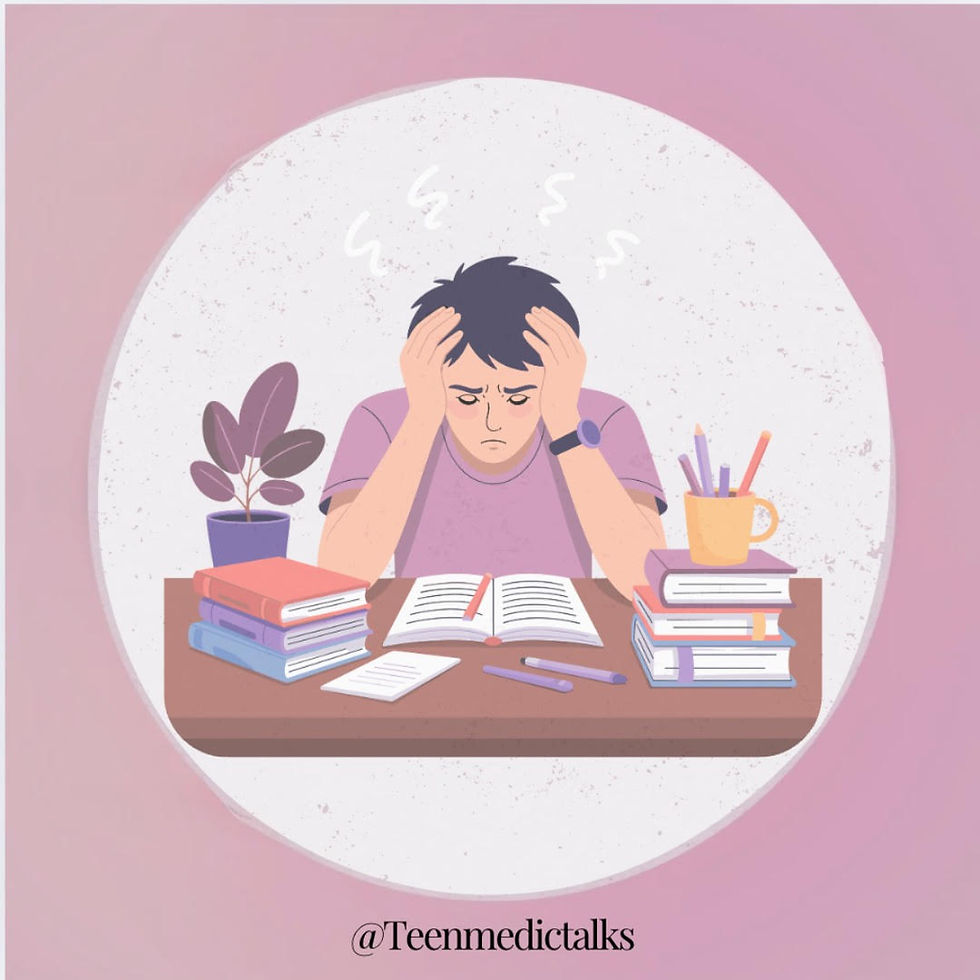The Impact of Screens on Teenagers
- Maria Youssef
- Sep 12
- 3 min read
Updated: Oct 14
Imagine lying in bed late at night, scrolling endlessly through social media, and before you know it, hours have gone by! The next morning you're exhausted and anxious. Despite how you're feeling, you still reach for your phone. This isn't just a matter of bad habits or being “too online.” This is very much an ongoing problem for teens today, the impact of excessive screen times on health, sleep, and overall wellbeing. While technology is important for learning and staying connected, too much can cause both mental and physical problems, especially in teens whose bodies and minds are still growing and developing.
One of the biggest impacts of screen use is on sleep. Blue light from phones, tablets, and computers can get in the way of the body's natural sleep cycle, making it hard to fall asleep, and even harder to stay asleep. Poor sleep not only makes you tired but also affects memory, focus, and overall mood. This becomes especially harmful for teens, who already need more sleep to support their brain development (SleepFoundation, 2025).
Screens also affect mental health. Studies show that high amounts of screen time, especially when it comes to social media, are linked to higher levels of stress, anxiety, and depression in teens. Constant comparison, online pressure through social media, and the addictive need of scrolling can weigh heavily on young people. A study shown from 2017 reports that roughly 500,000 eighth through twelfth graders show a high number of depressive symptoms, increasing 33 percent between 2010 to 2015. This mental strain can make it harder to focus on school, friendships, and even personal goals (ChildMind, 2025).
Physical health is another area where screens cause large impacts. Staring at devices for a long period of time can lead to digital eye strain, causing headaches, dry eyes, and blurry vision. Long hours sitting or laying down can also cause posture, back problems, and a decrease in physical activity, which adds up over time and causes harm to overall health (American Optometric Association).
Too much screen use doesn't just affect the body and mind, it also lowers focus and productivity. Constant notifications and multitasking make it harder to concentrate on schoolwork and other responsibilities. Teens may think they are multitasking but research shows it reduces performance and learning (PBS).
The good news is there are ways to prevent these negative effects! Setting limits with screentime is one of the easiest steps. Using apps or phone settings can help track and reduce usage. Taking breaks is also important, and many eye doctors recommend the “20- 20- 20 rule.” Every 20 minutes, look at something 20 feet away for 20 seconds. Avoiding screens at least an hour before bed improves sleep, while regular exercise and movement boost energy, mood, and physical health. (“The 20-20-20 rule”).
In conclusion screens are a huge part of teen life, but too much use can cause harm to sleep, mental health, physical health, and focus. By understanding these risks and using strategies like screen limits, The “20- 20- 20 Rule” and exercise, teens can enjoy technology a lot better and without it letting it take over their health and wellbeing. These can make big differences in feeling healthier, happier, and overall more focused everyday.
Work Cited:
Blue light and sleep. (n.d.). Sleep Foundation. https://www.sleepfoundation.org/bedroom-environment/blue-light
Is social media use causing depression? (n.d.). Child Mind Institute
https://childmind.org/article/is-social-media-use-causing-depression/#:~:text=Curation%20of%20a%20perfect%20image,t%20the%20%E2%80%9Creal%E2%80%9D%20them.
Computer vision syndrome. (n.d.). American Optometric Association. https://www.aoa.org/healthy-eyes/eye-and-vision-conditions/computer-vision-syndrome
Screen time. (n.d.). PBS NewsHour. https://www.pbs.org/newshour/show/screen-time
The 20-20-20 rule: Preventing digital eye strain. (n.d.). Discover ICL. https://us.discovericl.com/blog/the-20-20-20-rule-preventing-digital-eye-strain









Comments